Mark Bibby Jackson wanders through Dijon France, discovering Burgundy’s finest wines, and savouring the birthplace of real mustard in France’s gastronomic capital — the gateway to the Vallée de la Gastronomie.
I arrive in Dijon expecting mustard. What I discover is a elegant city rich in history, stretching all the way back to Roman times. As for cuisine, Dijon does not just have mustard, but also world-class Pinot Noir, cassis and a ‘gingerbread’ that hasn’t changed since the 18th century.
Having managed to navigate the city’s pedestrian road network – cars are discouraged – I arrive at our hotel the Darcy on the square of the same name. My car safely stowed overnight in the underground car park – best place for it – I explore the city withy my guide Agathe Gebraël who also happens to be an expert in the medieval history of the region.
Dijon City Tour
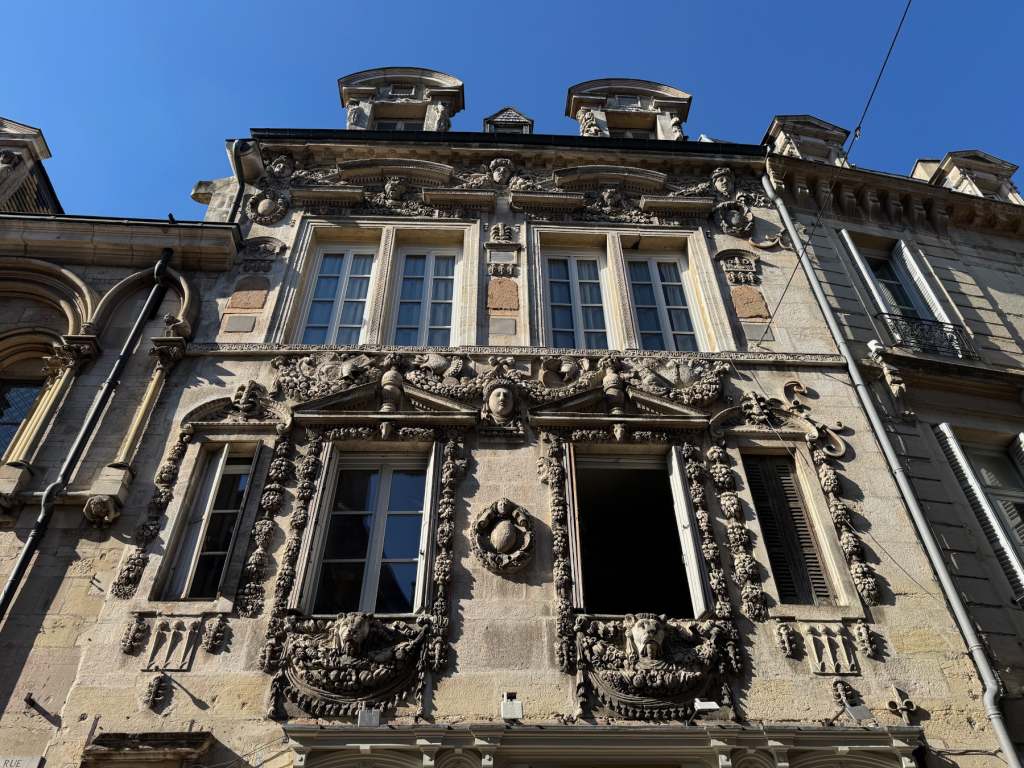
I soon realise that Dijon is a city steeped in history. Close to the hotel is the small cathedral which was built in the 18th century although the original building dates back to the 13th century. The Dukes of Burgundy ruled here from the 9th century, swiftly transforming Dijon from what was a modest Roman camp into a formidable European power base. Their influence reached across borders into the Netherlands, with strong trade ties to England. Their legacy is still visible in the townhouses built by parliamentarians in the 17th century — more than 120 of them, each one a testament to Dijon’s civic pride and wealth.
My journey continues to Liberation Square, once the private courtyard of the Dukes of Burgundy. The grandeur still lingers, though the cannons have been replaced by café terraces and fountains. The palace — once the centre of a powerful European duchy — now serves as the City Hall. It shares its architectural lineage with Versailles, thanks to the same architect. Dijon’s golden age may have begun over a millennium ago, but it still feels very present.
Within the Ducal Palace’s courtyard is the Musée des Beaux-Arts. Agathe explains how it offers a sweeping survey of the successive artistic styles that have dominated Dijon through the centuries. Only 1% of the museum’s collection is on display at any time, a reminder of the depth of culture in this modest-sized city.
A Green Future
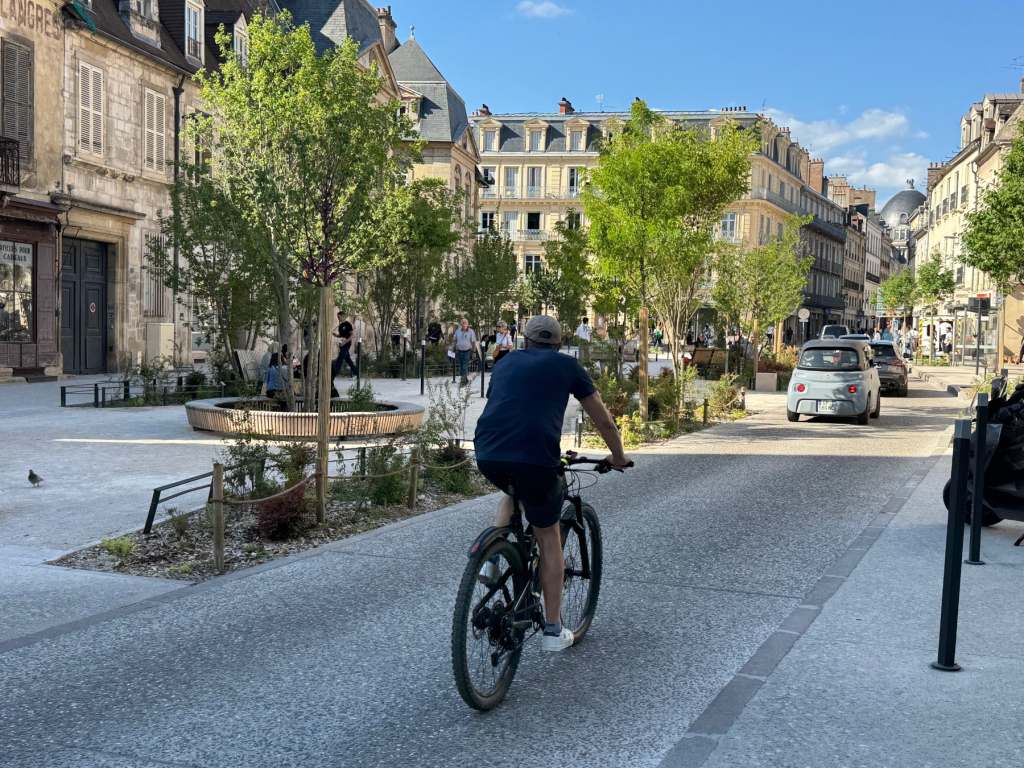
While history is everywhere — from the medieval façade of Notre Dame with its whimsical Jacquemart clock, to the atmospheric Place Émile Zola, once the site of public executions — Dijon doesn’t dwell in the past. The city has been quietly reimagining itself. Cars are being pushed to the margins. Streets are calmer. Trees have returned. There are more places to sit and sip in the shade.
Les Halles is the covered market designed by none other than Gustave Eiffel — yes, that Eiffel, born right here in Dijon.
He never saw the project completed nor got paid for it. Still, his airy, practical design stands as a monument to local pride and gastronomy. On market day, the place is alive with cheese, meat, fish and produce — a visual and aromatic feast.
I stop in at Mulot & Petitjean, a gingerbread shop founded in 1796. Despite its age, the shop still belongs to the same family. Their pain d’épices, made only with honey, flour and anise but no actual ginger, is baked on-site.
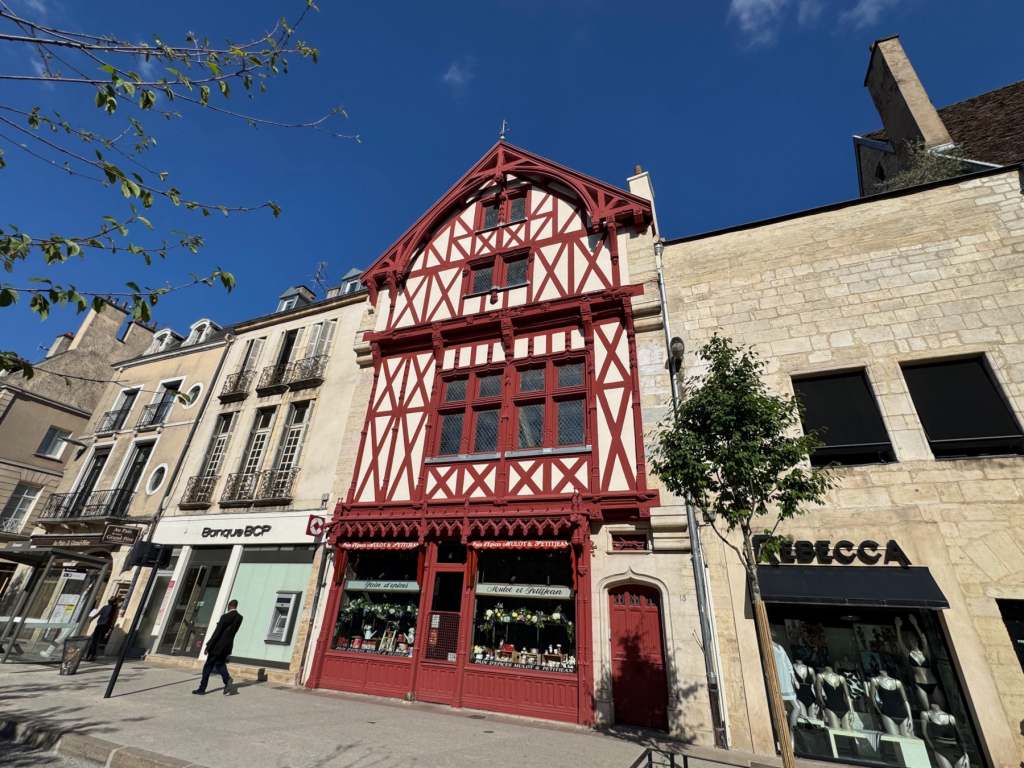
Dining at Hotel Darcy
Liberation Square is linked to Darcy Square by the main street – rue de la Liberté.
Hotel Darcy, just like the square is stylish with an understated elegance — contemporary comfort with just enough classic French charm.
In the evening, we dine here. My companion starts with some l’escargot, before trying the boeuf bourguignon, which is very tender. I have another staple of the region oeufs en meurette, eggs poached in the local Meurette sauce which is heavy on Burgundy wine, followed by some trout.
We round off the excellent meal with a selection of local cheeses.
Cité Internationale de la Gastronomie et du Vin
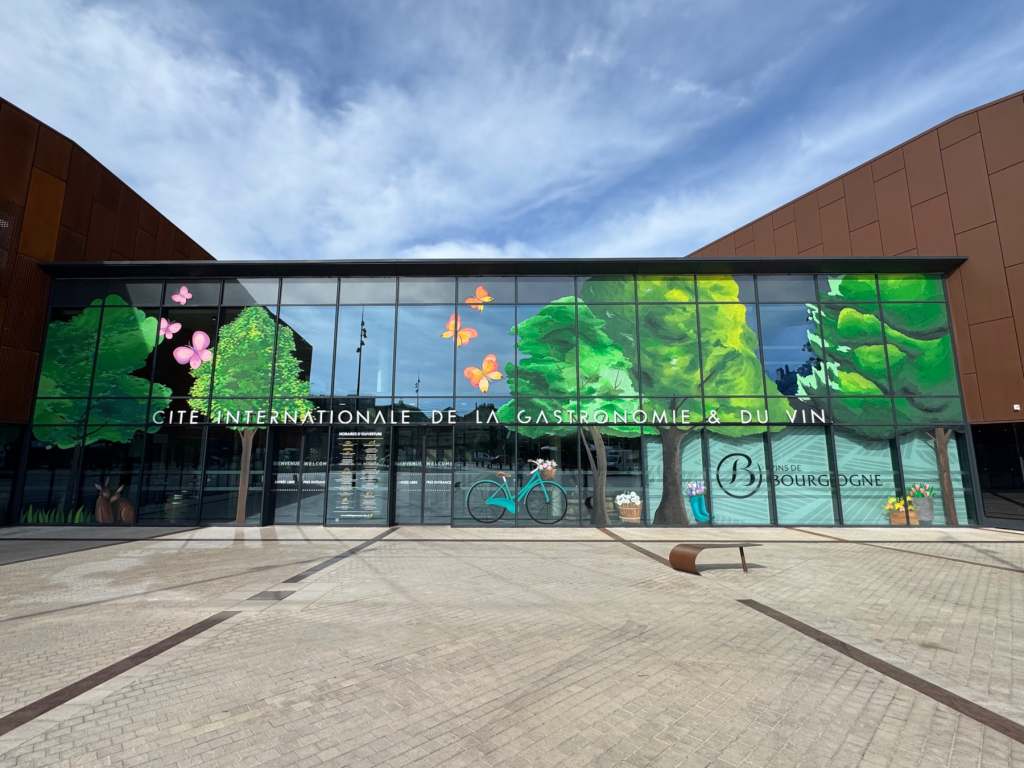
There are more than 350 types of cheese in Burgundy, I discover on my visit to the Cité Internationale de la Gastronomie et du Vin the following morning.
Opened in 2022, it’s built on the grounds of a former hospital and chapel, and spread across 17,000 square metres. It served as the city’s general hospital until 2015.
This is no tourist trap but an impressive tribute to France’s recognition by UNESCO for its gastronomic heritage. The French government chose Dijon for this project because, in many ways, it is France’s culinary soul. Although no doubt its neighbours in Beaune would contest. The twin cities have rival claims dating back centuries. Perhaps they should settle the dispute by a duel – red wine at dusk.
I start at the main exhibition, which has an interesting series of displays on dining etiquette, before moving to the Chapel of Jerusalem. This has an impressive exhibition exploring the Burgundy Climats. These are unique vineyard parcels shaped by geology, microclimate and centuries of winemaking tradition. Perhaps a poetic concept, but here like everything else in Dijon it’s grounded in taste.
Burgundy Wine Tasting
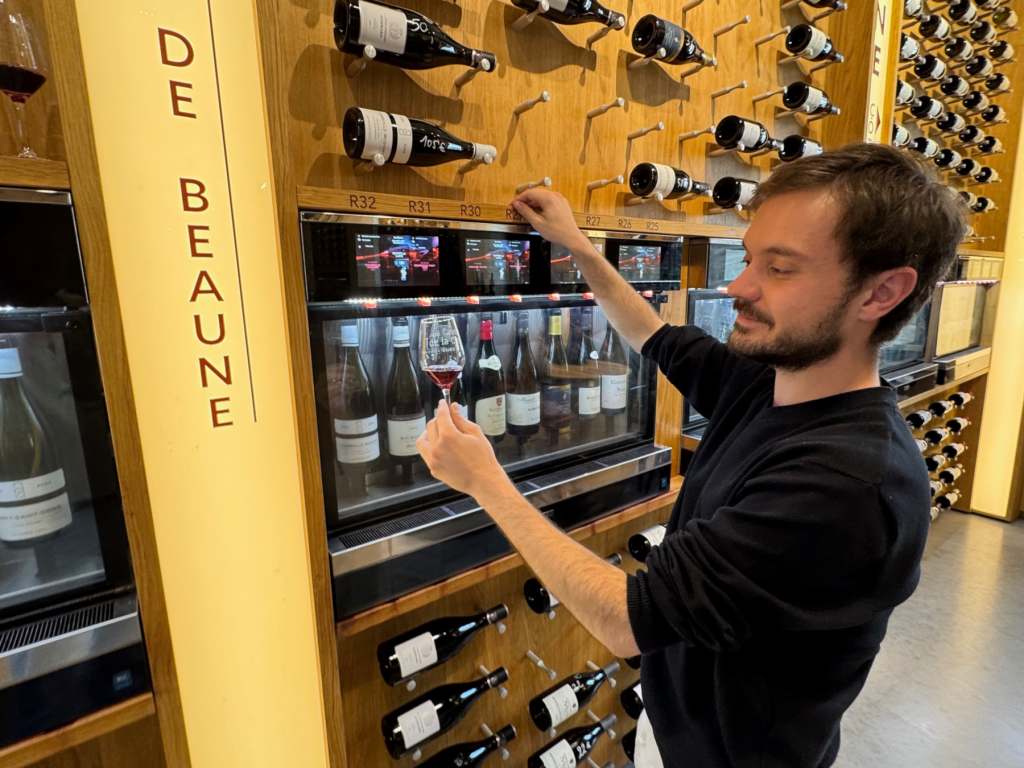
I head to La Cave, the on-site wine bar and cellar. Some 250 different wines are available for tasting each day. My host Etienne guides me through a flight of local wines, including a Chambolle-Musigny Premier Cru, bursting with raspberry and blueberry. He shows me a rare Mazis-Chambertin Grand Cru, which I’m told can fetch upwards of €19,000 a bottle. Sadly I was not offered a taste.
Lunch is at Meurette & Persillé, one of the Cité’s many dining outlets in its central food court. The name is a nod to two traditional Burgundian preparations — the poached eggs of the night before, and a finely chopped herb-and-garlic blend.
I start, naturally with the eggs but this this time bathed in a rich cheese sauce. My main is a perfectly cooked salmon, elegant and balanced. It’s a modern take on Burgundy’s rustic soul — and it works.
I stop by the mustard workshop, where you can make your own blend under expert guidance. Real Dijon mustard, I learn, is actually Moutarde de Bourgogne — not just a recipe, but a protected label requiring local ingredients. And it tastes nothing like the supermarket stuff that calls itself Dijon mustard but can come from anywhere so long as it follows the basic recipe.
Upstairs at La Cuisine Expérientielle, mixology workshops blend Burgundy wine with cassis in honour of the city’s own Kir cocktail. Félix Kir, mayor from 1944 to 1968, popularised the drink as a patriotic toast after the Liberation. Even the cocktails have deep significance in Dijon.
Dijon: Only the Start of a Journey
I reflect on how Dijon isn’t just a destination — it’s a starting point. Literally. It marks the beginning of the Vallée de la Gastronomie, a newly established gourmet trail stretching south towards Provence. This is a region that celebrates not just food and wine, but everything that connects them: place, people and heritage.
In Dijon, nothing is rushed — not the mustard, not the wine, not the conversation. It’s a place to linger, to taste and to discover. And with every bite and sip, I find myself sinking deeper into its extraordinary story — a city that pairs history with a love of the good things in life like no other.
Further Inspiration on Dijon France
To discover more on what you can do in Dijon and to discover the delights of the Bourgogne, please visit: https://www.burgundy-tourism.com/.
DFDS Ferries
Our return ferry to France was with DFDS, from Dover to Calais and back again. We opted for priority boarding and the premium lounge, which is ideal if travelling with an elderly companion. Once we arrived in Dover we decided to sail to Dunkirk instead, and the staff arranged this without hesitation, speeding up our overall journey time. As always the sailing was comfortable and all too brief.